4 Kinds of Common Machining Process: Broaching, Boring, Grinding, and Milling
Machining process 1 - Broaching
Broaching is a type of machining process, which is a cutting process that uses a broaching machine (broach) to process various internal and external formed surfaces. Broaching tools are very complex components, manufactured from a single piece. The material is mainly high-speed steel, and cemented carbide is only used for the machining of gray cast iron as a tool material. Unlike many other cutting operations, the main consideration is tool wear or tool life.
In the case of broaching, several teeth mesh at the same time, and the chip width is often very large. Removal of chips can be very problematic, so low-viscosity oil is usually also required. From the perspective of cutting fluid supply, internal broaching is more problematic than external broaching, and horizontal broaching is more difficult than vertical broaching.
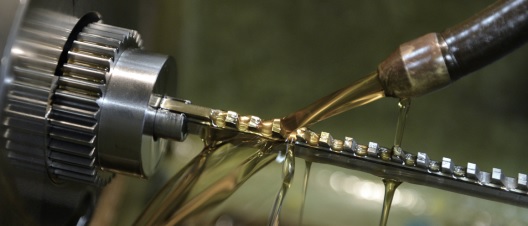
Use broach as a cutting tool. When the broach moves linearly relative to the workpiece, the machining allowance of the workpiece is sequentially cut by the teeth of the broach with increasing sizes. Usually, it can be processed in one working stroke, which is a highly efficient finishing method. However, due to the complex structure of the broach, the high manufacturing cost, and a certain degree of specificity, broaching is mainly used for mass production. According to different surface characteristics, broaching is divided into internal broaching and external broaching.
Internal broaching: It is used to process through holes and through grooves in various cross-sectional shapes, such as round holes, square holes, polygon holes, spline holes, keyway holes, internal gears, etc. There must be a machined hole before broaching so that the broach can be inserted through it. The broaching hole diameter ranges from 8 to 125 mm, and the hole depth does not exceed 5 times the hole diameter. Under special circumstances, the aperture range can be as small as 3 mm, as large as 400 mm, and the hole depth can reach 10 meters.
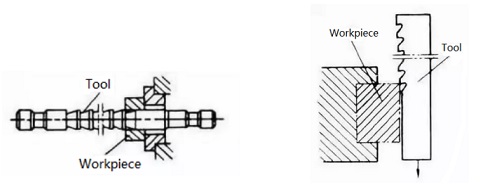
Internal broaching External broaching
External broaching: used to process non-closed surfaces, such as planes, forming surfaces, grooves, tongue and grooves, blade tenons and external gears, etc., especially suitable for processing relatively large planes and composite profiles in mass production, such as automobiles And the cylinder block, bearing seat and connecting rod of the tractor. The dimensional accuracy of broaching profile can reach IT8~5, the surface roughness is Ra2.5~0.04 microns, and the precision of broaching gear can reach 6~8 level (JB179-83)
When broaching, the order and methods of cutting the machining allowance from the workpiece include the final form, the progressive form, the wheel cutting type and the comprehensive wheel cutting type.
①The final form. The machining accuracy is high, the surface roughness is small, but the efficiency is low; the broach is longer, and it is mainly used to process small and medium-sized round holes and high-precision forming surfaces.
②The progressive type is suitable for rough broaching of complex processing surfaces, such as square holes, polygonal holes and spline holes. The broach used in this method is easier to manufacture, but the quality of the processed surface is poor.
③The wheel-cutting type has high cutting efficiency and can reduce the length of the broach, but the surface quality is poor. It is mainly used to process round holes with larger dimensions, more machining allowances and lower precision requirements.
④Comprehensive wheel-cutting type is to use wheel-cutting method for rough broaching and forming method for fine broaching. It has the advantages of both and is widely used for round hole broaching.
Machining process 2 - Boring
Boring is a cutting process that uses tools to expand holes or other circular contours. Its application range generally ranges from semi-rough machining to finishing. The tools used are usually single-edged boring tools (called boring bars). The method of reverse boring processing is called reverse boring processing. On CNC machine tools, we often use non-standard tools (eccentric boring cutters, rotating blades, special anti-boring cutters) to perform anti-boring processing using CNC machining programs.
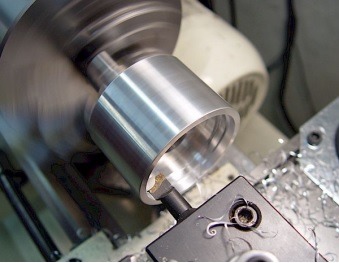
Use a rotating single-edged boring tool to enlarge the prefabricated hole on the workpiece to a certain size to achieve the required precision and surface roughness for cutting. Boring is generally carried out on boring machines, machining centers, and combined machine tools. It is mainly used to process cylindrical holes, threaded holes, grooves and end faces on workpieces such as boxes, brackets and bases; when special accessories are used, it can also be used. Process inner and outer spherical surfaces, taper holes, etc. The boring accuracy of steel materials can generally reach IT9~7, and the surface roughness is Ra2.5~0.16 microns.
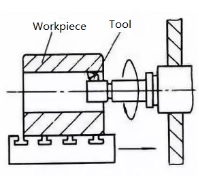
Boring cylindrical holes
When boring, the workpiece is installed on the machine tool table or the machine fixture, the boring tool is clamped on the boring bar (also can be integrated with the boring bar), and the spindle is driven to rotate. When the boring die is used, the boring bar is floatingly connected to the spindle, and the machining accuracy depends on the accuracy of the boring die; when the boring die is not used, the boring bar is rigidly connected to the spindle, and the machining accuracy depends on the accuracy of the machine tool. Due to the large overhang distance of the boring bar, vibration is prone to occur, so the selected cutting amount should not be large. Boring processing is divided into rough boring, semi-fine boring and fine boring. The cutting speed when boring ordinary steel with high-speed steel head is generally 20-50 m/min; the cutting speed when using cemented carbide head is 40-60 m/min for rough boring and 150 for fine boring M/min or more.
For precision boring that requires high accuracy and surface roughness, diamond boring machines are generally used, and tools made of superhard materials such as cemented carbide, diamond and cubic boron nitride are used, and a very small feed amount (0.02 ~ 0.08 mm /Rev) and cutting depth (0.05~0.1mm) are higher than the cutting speed of ordinary boring. The machining accuracy of precision boring can reach IT7~6, and the surface roughness is Ra0.63~0.08 microns. Before precision boring, the prefabricated holes must go through rough boring, semi-finish boring and fine boring processes to leave a thin and uniform machining allowance for precision boring.
Machining process 3 - Grinding
Grinding refers to the processing method of using abrasives and abrasive tools to remove excess material on the workpiece. Grinding is one of the more widely used machining process. It belongs to finishing (machining process is divided into rough processing, finishing, heat treatment and other processing methods), and the processing volume is small and the precision is high. It is widely used in the machinery manufacturing industry. After heat treatment and quenching of carbon tool steel and carburizing and quenching steel parts, a large number of relatively regular arrangement of cracks often appear on the surface that is basically perpendicular to the grinding direction during grinding-grinding cracks , It not only affects the appearance of the parts, but more importantly, it directly affects the quality of the parts.
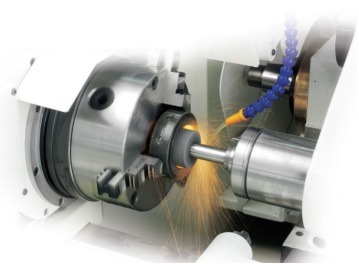
The cutting process of the surface of the workpiece using high-speed rotating grinding wheels and other abrasive tools. Grinding is used to process internal and external cylindrical, conical and flat surfaces of various workpieces, as well as special and complex forming surfaces such as threads, gears and splines. Due to the high hardness of the abrasive grains, the abrasives have self-sharpening properties. Grinding can be used to process various materials, including hardened steel, high-strength alloy steel, cemented carbide, glass, ceramics, marble and other high-hardness metals and non-metallic materials. metallic material. Grinding speed refers to the linear speed of the grinding wheel, which is generally 30 to 35 m/s. When it exceeds 45 m/s, it is called high-speed grinding. Grinding is usually used for semi-finishing and finishing. The accuracy can reach IT8~5 or even higher. The surface roughness is generally Ra1.25~0.16 microns for grinding, and Ra0.16~0.04 microns for precision grinding, ultra-precision grinding The grinding is Ra0.04~0.01 microns, and the mirror grinding can reach Ra0.01 microns or less. Grinding specific power (or specific energy consumption, that is, the energy consumed by cutting a unit volume of workpiece material) is larger than general cutting, and the metal removal rate is lower than general cutting, so the workpiece is usually removed by other cutting methods before grinding For most of the machining allowance, only a grinding allowance of 0.1 to 1 mm or less is left. With the development of high-efficiency grinding, such as slow-feed grinding and high-speed grinding, parts can be ground directly from the blank. Grinding is also useful as waste processing, such as grinding the pouring riser of castings, the flash of forgings and the outer skin of steel ingots.
There are 3 types of grinding process, Cylindrical grinding, Flat grinding, and Internal grinding.

Cylindrical grinding: It is mainly carried out on the cylindrical grinder to grind the outer cylinder, outer cone and shaft shoulder end face of shaft workpieces. During grinding, the workpiece rotates at a low speed. If the workpiece simultaneously reciprocates longitudinally and the grinding wheel feeds the workpiece laterally after each single or double stroke of the longitudinal movement, it is called the longitudinal grinding method. If the width of the grinding wheel is greater than the length of the surface to be ground, the workpiece does not move longitudinally during the grinding process, but the grinding wheel continuously feeds the workpiece horizontally, which is called plunge grinding. Generally, the efficiency of plunge grinding is higher than that of longitudinal grinding. If the grinding wheel is trimmed into a forming surface, the cut-in grinding method can process the formed outer surface.
Flat grinding: Mainly used for grinding planes, grooves, etc. on a surface grinder. There are two types of surface grinding: the grinding with the outer surface of the grinding wheel is called peripheral grinding (Figure 3). Generally, a horizontal axis surface grinder is used. For example, a forming wheel can also be used to process various forming surfaces; the grinding with the end face of the grinding wheel It is called end grinding and generally uses a vertical shaft surface grinder.
Internal grinding: generally performed on a centerless grinder to grind the outer circle of the workpiece. When grinding, the workpiece does not need to be centered and supported by the top, but is placed between the grinding wheel and the guide wheel, supported by the supporting plate below it, and driven by the guide wheel to rotate. When the axis of the guide wheel and the axis of the grinding wheel are adjusted at an oblique angle of 1° to 6°, the workpiece can automatically move in the longitudinal direction while rotating, which is called through grinding. Through grinding can only be used to grind the outer cylindrical surface. When using plunge-cut centerless grinding, the axis of the guide wheel and the axis of the grinding wheel must be adjusted to be parallel to each other, so that the workpiece is supported on the pallet without axial movement, and the grinding wheel is continuously fed transversely relative to the guide wheel. Plunge type centerless grinding can process the shaped surface. Centerless grinding can also be used for internal grinding. During processing, the outer circle of the workpiece is centered on the roller or support block, and the eccentric electromagnetic suction ring is used to drive the workpiece to rotate. The grinding wheel extends into the hole for grinding, and the outer circle serves as the positioning The benchmark can ensure that the inner circle and the outer circle are concentric. Centerless internal grinding is often used to grind the inner raceway of a bearing ring on a special grinding machine for bearing rings.
Machining process 4 - Milling
Milling is to fix the blank, and use a high-speed rotating milling cutter to move on the blank to cut out the required shape and features. Traditional milling is mostly used to mill simple shapes/features such as contours and grooves. The CNC milling machine can process complex shapes and features. The milling and boring machining center can perform three-axis or multi-axis milling and boring processing, which is used for processing, molds, inspection tools, molds, thin-walled complex curved surfaces, artificial prostheses, blades, etc. When selecting the content of CNC milling, the advantages and key roles of CNC milling machine should be fully utilized.
Milling is a common metal cold processing method. The difference from turning is that the tool rotates at a high speed under the drive of the spindle, while the workpiece is relatively stationary.
Turning is used to process revolving parts. The parts are clamped on the main shaft of the machine tool through a three-grip chuck and rotated at high speed. Then, the turning tool is used to move the tool according to the bus bar of the revolving body to cut out the product appearance. The lathe can also process the inner hole, thread, biting, etc. The latter two are low-speed processing.
The main processing objects suitable for CNC milling are as follows:
1) Curve contours on the workpiece, straight lines, arcs, thread or spiral curves, especially non-circular curves and list curves given by mathematical expressions.
2) The spatial curve or surface of the mathematical model has been given.
3) Although the shape is simple, but the size is various and the detection is difficult.
4) The cavity and the inside of the box that are difficult to observe, control and detect when processed by ordinary machine tools.
5) Holes or planes with strict size requirements.
6) A simple surface or shape that can be processed in one clamping.
7) General processing content that can effectively improve productivity and reduce labor intensity by using CNC milling processing.


